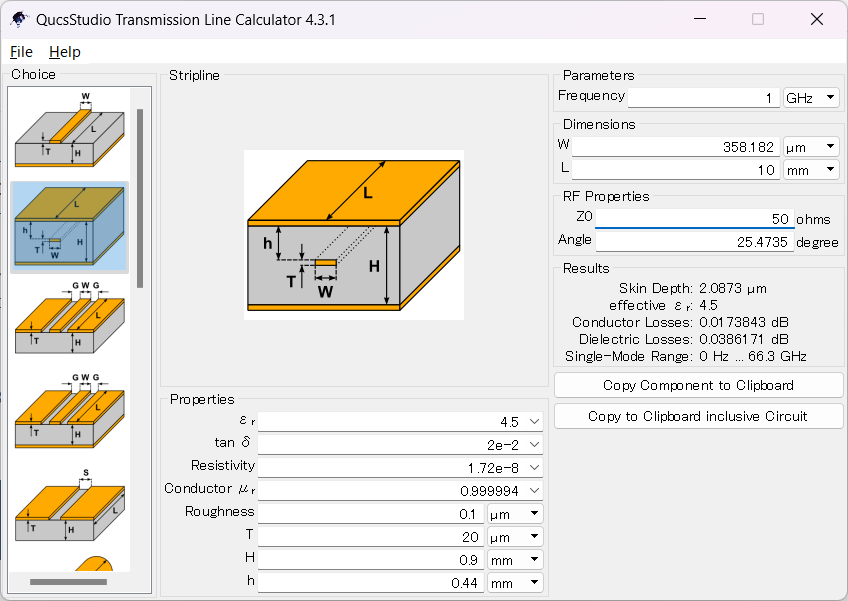As electronic circuit design becomes more sophisticated, requiring high-density and complex wiring, the use of multilayer boards such as 4-layer or 8-layer boards has become increasingly important. Multilayer boards use different substrates for different layers, resulting in varying dielectric constants. While these variations complicate the calculation of characteristic impedance, this calculation is crucial as it directly affects circuit performance and signal quality. This article explains how to effectively calculate the characteristic impedance of striplines using different dielectric substrates with QucsStudio.
Measuring the Characteristic Impedance of Boards with QucsStudio
QucsStudio is a reliable tool that supports the design and simulation of electronic circuits, making it easy to calculate the characteristic impedance of transmission lines. While there are many tools available for calculating the characteristic impedance of boards, the advantage of QucsStudio is that it allows for various circuit simulations within the same platform. This integrated environment streamlines the design process, enabling more efficient circuit design.
The Role of Striplines
Properly impedance-controlled striplines reduce reflections within the transmission line, efficiently transmitting signals. The impedance is determined by three main factors: the width of the signal line, the thickness of the substrate, and the dielectric constant. Precisely designing these elements and correctly matching the impedance are crucial for ensuring signal quality and optimizing circuit performance.
Method for Calculating Characteristic Impedance
The characteristic impedance of striplines is determined by three main parameters: the thickness of the dielectric (h), the thickness of the conductor (t), and the width of the conductor (w), typically calculated using the following approximate formula:

For boards composed of materials with the same dielectric constant, please refer to another article for the method of calculating the characteristic impedance.
This time, the method for measuring the characteristic impedance of a board composed of layers with different dielectric constants will be explained.

Typical approximation formulas do not account for substrates made of different dielectric materials, so a weighted average method is used to approximate the dielectric constant, and QucsStudio’s Transmission Line Calculator is then used to calculate the characteristic impedance.
Weighted Average Method
The effective dielectric constant (εeff) of a board with multiple layers of different dielectric constants can be approximated by weighting the dielectric constant and relative height of each layer. For example, when considering layers with two different dielectric constants εr1 and εr2, the effective dielectric constant εeff can be approximated as follows:

For example, if h1=400um and h2=500um, the effective dielectric constant would be calculated as follows:
\[
\epsilon_{\text{eff}} = \frac{400 \times 3.8 + 500 + 4.5}{400 + 500} = 4.19
\]
By inputting the calculated effective dielectric constant into QucsStudio’s Transmission Line Calculator, the characteristic impedance of the stripline composed of different dielectric materials can be determined.

Summary
With QucsStudio, it’s easy to calculate the characteristic impedance, even when using substrates with varying dielectric constants. Leveraging this technique allows designers to achieve smooth and effective circuit design without compromising signal quality.



Comment